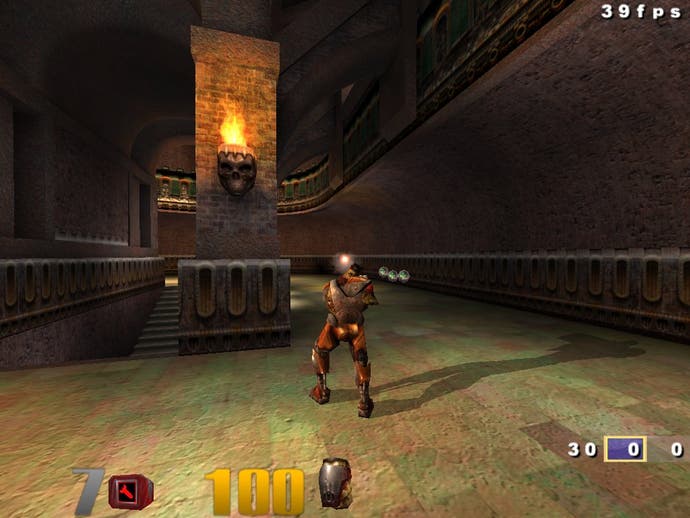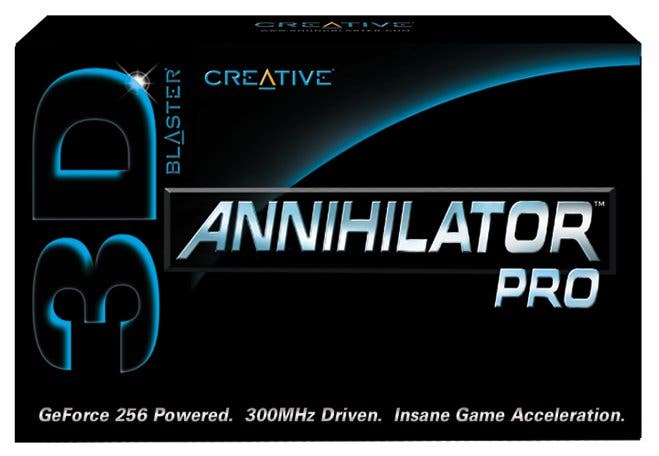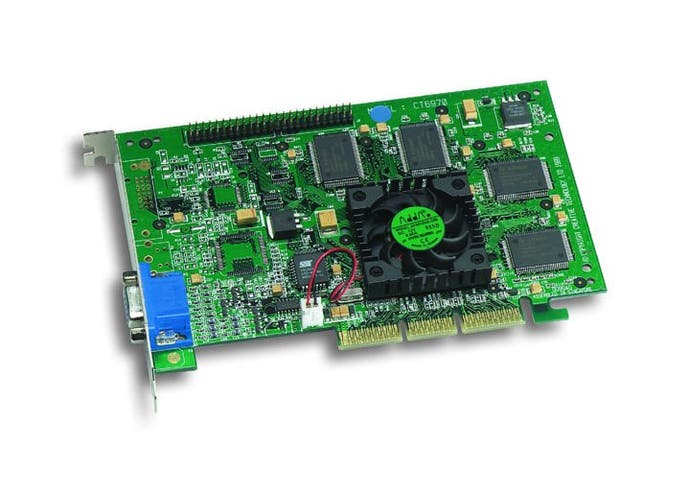Creative Labs Annihilator Pro review
GeForce DDR video card reviewed
- Creative LabsPrice - £218 ( direct from Creative Europe)

In The Beginning
In the beginning, 3dfx based hardware ruled the 3D acceleration scene. Many companies sold products utilising their technology, with Creative Labs being just one. But with 3dfx's acquisition of STB, Creative et al. had to turn to other chips to use in their products. Enter NVIDIA.
NVIDIA's first real entry into the 3D accelerator market came with the Riva128 chip. This supported a maximum of 8Mb of RAM and performed admirably for the time. It was also one of the few chips that actually took advantage of any AGP features. It was, however, plagued by driver and performance problems, and therefore did not find itself the choice of the serious gamer.
Since then NVIDIA have seriously improved their technology and drivers and we have seen the TNT, TNT2 (with an Ultra flavour), and now we have their newest chip - the GeForce 256.

May The GeForce Be With You
The GeForce builds on NVIDIA's previous chips by not only adding superior performance, but also a very powerful new feature .. but more on that later.
The chip itself contains four rendering pipelines, which is twice as many as the previous generation. This allows for up to four textured pixels to be produced in one clock cycle, or alternatively to produce quad textured pixels, which in theory allows for far more detailed scenes with little performance hit.
This 'quad rendering engine' helps to push the fill rate of the chip up to 480Mtexels/sec while not requiring any increase in clock speed. In fact, due to the design the chip runs at a lower clock speed than previous chips, a measly sounding 120MHz.
So what is this new feature? For those of you who have had your heads under a rock over the past month or so, NVIDIA have decided to offload a significant chunk of the 3D processing normally done by the CPU on to the graphics chip itself. This is commonly referred to as geometry processing, or Transform and Lighting (T&L), and is an extremely computationally expensive process.
By shifting this off the CPU they have freed it up to allow more processing power to be used on other tasks, such as better physics or AI. The net result of this is that the GeForce 256 chip is fairly substantial in size, as it contains over 22 million transistors. In comparison to a P3-500 which only has 9 million, this is quite some chip.
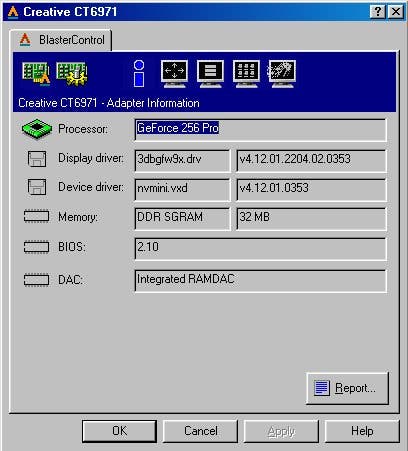
Professional Annihilation
Creative have harnessed the power of this new chip in their new Annihilator Pro graphics board, and to achieve maximum performance they have made a couple of changes to their original Annihilator design.
On their initial release, GeForce boards performed slower than expected, and their fill rates where severely compromised. It was discovered that it was actually the 166MHz memory that was producing the bottleneck that was keeping down performance. Fortunately using faster memory solves the problem, but being highly expensive to produce another solution had to be found.
Enter DDR (Double Data Rate) memory. Standard memory can only be written to and read from on either the rising or falling edge of the clock pulse signal. DDR changes this to allow data to be written to and read from memory on both the rising and falling edges of the clock pulse, similar to the way in which AGP 2x functions. This has the net effect of doubling the bandwidth available.
The Annihilator Pro uses this type of memory, and therefore suffers none of the performance loss experienced with SDR (single data rate) memory. In order to differentiate between the memory clocks, the memory on the Pro is referred to as running at 300MHz. This is double the standard 150MHz and adequately represents (in simple terms) the benefits of DDR memory.
Creative Labs have done a sterling job with the Annihilator Pro, and have complimented a well built card with drivers of equal quality. Apart from an error in the installation process (which should be corrected by the time you read this), the drivers installed easily enough, and provide a full set of useful tweaks.
There are a lot of standard options that we have seen with previous NVIDIA drivers, such as options for setting the image quality vs. speed trade off, but with the GeForce being able to perform anisotropic filtering without suffering any performance hit, there is also an option to enable this as the default filtering method.
As expected there is an overclocking option, although this is only for the memory clock speed, and not for the core clock. The default setting is 300MHz, but the slider allows for a maximum of 330MHz.
The memory itself is rated at 6ns, which means that it will support a maximum REAL clock of 166MHz. Now applying the DDR idea of doubling the speed, the memory should be able to hold up even as fast as 332MHz. That said, I don't recommend any overclocking activities, but should you try there is potential for a visible performance increase.
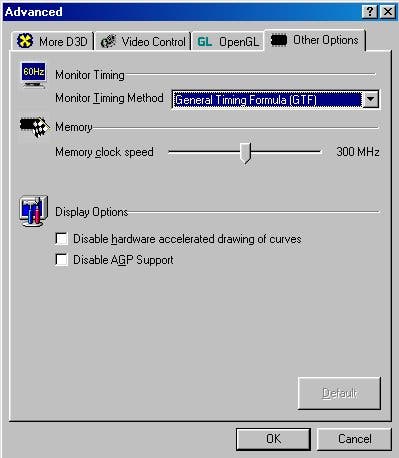
Performance
The performance benchmarks really speak for themselves, as it is easily visible that the GeForce is significantly faster than a TNT2 Ultra, which is really the only real rival in performance terms.
It is certainly interesting to see that with DDR memory the GeForce is achieving its target fill rate. This is really down to the higher bandwidth made available by the DDR SGRAM.
In game the Annihilator Pro is extremely fast, and while most games may not support T&L acceleration directly yet, there is a performance increase due to the increased fill rate of the GeForce. It is even possible to turn on every feature at high bit depth and resolution and still maintain a reasonable framerate in games like Quake 3 Arena, although no hardcore gamer would want to play at such a low frame rate.
It is interesting to note that the test system used is only a P2-450 based machine. It is surprising to see such a performance increase despite this CPU limitation. Hopefully we should be upgrading the test platform next year (fortunately only days away now), and it will be interesting to see how the Annihilator Pro performs with a "real" CPU.
Conclusion
It is clear to see that NVIDIA have successfully kept their crown as King of the 3D world. The GeForce 256 is an impressive step forward, and the Annihilator Pro is a great card that takes full advantage of this chip.
Creative Labs have done a fine job on both the card and the drivers, which is to be expected from such a massive company. They have also updated their box design and dropped the orange (at least for the time being) and packaged the Annihilator Pro in a very sexy black box.
The supplied software is reasonable, but certainly nothing special. There are a selection of NVIDIA tech demos, which show off some of the features of the card, as well as a preview of Evolva and a copy of WinDVD. I was a little disappointed that there were no more games (or even demos) included, but such is the way of bundles.
Now I know what you are thinking. What games actually use hardware T&L acceleration? At the moment very few, but the game developers will be taking advantage of these features, and when they do we will see the full power of the GeForce. We may have to wait a short while, but they will appear.
So should you get one now? Considering that it is the latest and fastest accelerator available, it is certainly worth looking at if you are a total performance freak.
Seeing that 3dfx's new cards have been delayed until about March or April, the Annihilator Pro will be on top for some time. We should also be seeing some use of hardware T&L in games by then, and with 3dfx's next generation chips not supporting T&L, the Annihilator Pro might be in for quite a run at the top of the performance chart.
The Annihilator Pro is a great card, with great potential that hasn't been fully realised yet. I only hope that you find one under the Christmas tree, as at about £200 they aren't cheap. Release Date - available now
